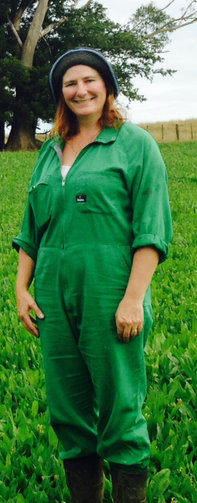Grass into Gold - Seasonal update: Susan Dyer, Drury
Drury 2 April: Take care not to overgraze pastures during a dry and challenging summer has proved its worth for sharemilkers Susan and Mark Dyer on 160 ha (eff) at Ararimu this season.
Daily pasture growth rates fell to as low as 5 kg DM/ha in January and February and farm covers have really only just started heading in the right direction, with the latest reading from this week at 1750 kg.
However, the speed of ryegrass pasture recovery now that the farm has received some rain has been ‘amazing’, thanks to a determined effort to leave at least a bit of length on paddocks during the dry. (Four cm is the recommended minimum.)DM/ha and daily growth at 49 kg DM/ha.
“We haven’t fertilised yet, but the growth has just gone nuts. And the quality is great. We were faced with having to dry off potentially as early as 10 April, but we’re hoping to get N on behind the cows in the next round and if this level of growth response holds we will be able to carry on longer.”It took some doing, but Susan says protecting the paddocks during January and February was worth the effort.
It’s been a difficult season for the Dyers. The feed situation saw them cut milking cow numbers relatively early; they’re currently milking 185, down from a peak of 360, and feeding 5 kg DM maize silage/cow/day, 1 kg PK, 2 kg baleage and 3 kg turnips, with pasture at 5 kg DM/head/day on a 30 day round.
The herd has been on OAD milking since 22 January, and current daily production is 1 kg MS/cow, which Susan says is to be expected given the low level of protein available.
This the first season they’ve fed their cows summer turnips, and Barenbrug agronomist Jen Corkran has provided ‘fantastic’ support in helping them get the best out of the crop, including grazing advice and ME testing.
Now Susan says they’re looking ahead to winter, and focussed on achieving their 2400 kg DM/ha target cover at 1 June. Cows are wintered on.
“We know from experience that if you don’t start from a higher pasture cover it’s very easy to pug the paddocks. If you’ve got that little bit of cover they have that extra buffer. Even though some of that grass might be wasted, they don’t pug as badly. Mark hates pugging, and he’s pretty pedantic about protecting paddocks.”

